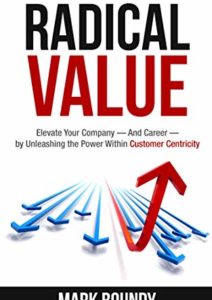Companies need excellence in managing their sales funnel at every level. From salesperson self-diagnosis to sales management one-on-ones, to executive funnel meetings, funnel management is the key to understanding the health of the business. Doing it well is a differentiator of high-performing sales organizations.
In this article, I’d like to go over some of the principles I work on with my clients. We build a regular cadence around the checkpoints below.
- Some are indicators of sales behavior gaps. That is, the areas below identify gaps in how sellers are managing their businesses, and point sales managers to productive coaching conversations.
- Some are indicators of dysfunctional management behavior. Yes, some problems in a seller’s funnel come about because management put inappropriate incentives in place.
1. Does the Funnel Reflect Your Business?
Does your funnel reflect how your customers buy, and how your sales process aligns to it? If your process looks like what came with your CRM “out of the box”, it probably doesn’t fit your business. The old saw “sales is sales” doesn’t extend to your sales process and funnel stages. Take the time to make your funnel yours, instead of your CRM vendors.
Simple process steps or full-on playbooks which incorporate all selling resources and roles are fine, depending on your business, but:
One simple guideline: build your process around your typical customer journey. Process details can get complex, but make sure that nothing clouds the view of the customer’s buying process.
2. Does Your Funnel Give Full Visibility?
Bad news: if a seller is spending time on it, it should be in the funnel. Sellers can’t plan their work effectively when they “maintain two sets of books”. Worse, companies can’t resource properly.
Lack of visibility is often a product of dysfunctional incentives. If management harangues indiscriminately on early-stage deals, sellers sandbag. If the documentation/data entry burden is high on early-stage deals, sellers logically avoid a high cost-benefit hassle. Leaders, if you want full visibility, you need to welcome it…or at least minimize the pain of disclosure.
- For example, I recently worked with a sales force whose standard operating procedure was to “enter-into-CRM-when-won”. The company’s close rate was 90+%, but opportunities appeared in the CRM minutes to days before being won (actual sales cycle could be 5 quarters). As a manufacturing company, lead times stretched because operations had no advance notice, and couldn’t order materials. While salespeople hated dealing with long lead times, they hated dysfunctional funnel conversations even more.
3. Is There Enough Business In Your Funnel?
This is a sticky subject. Some sales leaders gravitate toward oversized funnels: The bigger the funnel, the better it must be, right? Maybe. Predictably, mere minutes after an edict for 3x or 5x the sales goal goes out, salespeople begin entering “manager repellant” deals into their funnels. Then, everyone from sellers to managers, CRM admins, executives, operations leaders, etc. is sucked into the extra work of touching and handling hundreds of “dead man walking” opportunities. There has to be sufficient volume of opportunities to retire sales goal, but “multiples” change, depending on individual seller ratios, seasonality, fit, industry, and more.
While I work with clients on “funnel sufficiency”, we combine raw volume with opportunity scoring for fit/winnability. When we objectively identify low-probability opportunities – and remove them from the funnel – predictability increases. More important, time-wasting opportunities are de-resourced, directing effort more productively.
Bottom line: put only good deals into your funnel. If you find there aren’t enough of those, the cure isn’t adding garbage opportunities, is it?
4. Is the Funnel a Healthy Shape?
One level deeper than overall funnel sufficiency is the volume at each stage. I refer to this as a funnel shape. A healthy funnel is shaped like…well…a funnel. A variety of selling behavior problems show up simply by examining volume in each stage. For instance, if a seller’s funnel is dominated by top-of-funnel deals (with almost no opportunities in the middle and late stages), that seller is either a new rep or might have hard time qualifying opportunities. Similarly, different deformations signal a need for helpful coaching interaction. These conversations are targeted; guided by the funnel shape. Even better, coaching interventions occur in time to rescue opportunities…and sales careers.
5. Are Opportunities Progressing Well?
By itself, how quickly opportunities progress is an indicator of winnability. “Time kills all deals” is a truism. Once funnel stages corresponding to a customer’s buying process are identified and incorporated in your system, we develop an expected time for each stage. CRM systems can easily measure time-in-stage, which doesn’t have to trigger panic, but should trigger an alert to salespeople and front-line managers to diagnose the reason for the holdup.
The metrics-savvy manager could deduce that a higher number of sales stages might yield shorter stage durations, and thus a faster trouble indicator. Maybe; it depends on a couple of things. 1) The precision of defined customer actions for advancing to the following stage; poor definitions lead to lots of false triggering, which causes everyone to ignore alarms. 2) Your sales team’s willingness to put up with the workload of more frequent updates; the more detail a CRM asks for, the less accurate the CRM tends to be.
6. Can You Immediately See Opportunity Quality?
What would you think about a funnel view that didn’t only show the deal size and expected close date, but also had an indicator of quality/fit/winnability? Your view of your business would go from a flat, two-dimensional representation to a full-depth view. You would have greater confidence and could make better decisions, couldn’t you? This is true for the salesperson looking at their own business all the way to the CEO preparing for an investor call.
In my practice, I see a good-better-best continuum of opportunity quality:
- Basic level: Stages are assigned a standard win probability, perhaps validated historically. Sellers may also be able to override standard probabilities, using their personal estimates (or some overall guidelines).
- High Level: when customer actions are incorporated customer buying stage (item 5 above), zombie deals (no customer buying process is taking place, but opportunities keep walking through your funnel) are excluded. Another characteristic of this level is an opportunity score, with criteria specific to the business and customer fit.
- Elite Level: Some sales forces are trained to quantify customer-perceived value throughout an opportunity pursuit. When incorporated into the opportunity scoring system above, sellers and executives alike have a direct line-of-sight into the customer’s case for change and preference for the seller’s solution. Forecasts with this level of customer insight are highly reliable, and won-lost reviews are precision events. They also form the basis for profitable, win-win pricing.
7. Does the Funnel Show a Desirable Business Mix?
Does the funnel show healthy prospecting and early qualification activity? Looking at new opportunity entries, is there enough, and is initial qualification activity taking place? Are quality value conversations taking place from the outset? That is, is value being quantified early and widely?
Is the right emphasis given to large opportunities? Big numbers attract disproportionate resources; is there a solid value story in a place that justifies those resources? When appropriate, is there a co-created customer “plan-to-go-live” (the customer-centric twin of the “win plan”) in place?
Are stuck deals – those languishing too long in a given stage — identified in a timely manner and are interventions compelling? Looking at customer-perceived value assessments gives insight into the customer motivation/internal case for change.
Is the right product-mix represented? If not, is a seller gravitating toward a certain kind of business, leaving other opportunities untended? This could point to a product training issue, a misaligned incentives issue, or a seller issue. Figure out which and intervene accordingly.
Rinse. Repeat. Have Regular Cadence
None of these guidelines matter if they stay on the manager’s shelf. Hold your leaders accountable for a regular cadence. Make it a priority. Incentivize cadence properly and track it, because sales leaders aren’t any different than anyone else.
I hope this was helpful. It was certainly one of my longer articles but still feels like an overview. Contact me or ask questions below if I can add any more detail. If you’d like to go into more detail on your specific situation, feel free to contact me directly.
To your success!
I’d like to go over seven funnel management principles I work on with my clients. We build a regular cadence around these to achieve maximum performance.















































Comments (11)
This is an eye opener.
great body of work, Mark
really helpful
Pipeliner CRM is the best so far.
Very flawless site and easy to use.
Thanks for this, it would really go a long way
I think these are unavoidable questions every sales person should examine, however, the answers thereof are really informative.
This article is really helpful…. now i know what my funnel needs!!
Beautifully interesting
The Seven Component of Elite Funnel MAnagement.
These seven components are very vital and useful too, if companies will adequately apple the seven components as stated by Mark Bounty.
From his view according to Mark Bounty, Business builder, Sales leader, author, coach, consultant, teacher…Chief Clarity Office has grown businesses in a variety of industries by virtue of relentless focus on uncovering customer value and delivering high-value results. This is a must use tool for every sales person.
It’s fantastic and Very interesting
I have always had this belief that there are some unavoidable questions every salesperson should analyze, thank God, you have just helped by answering.